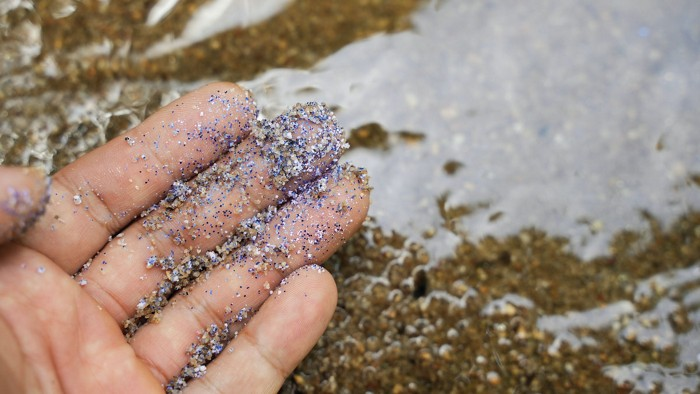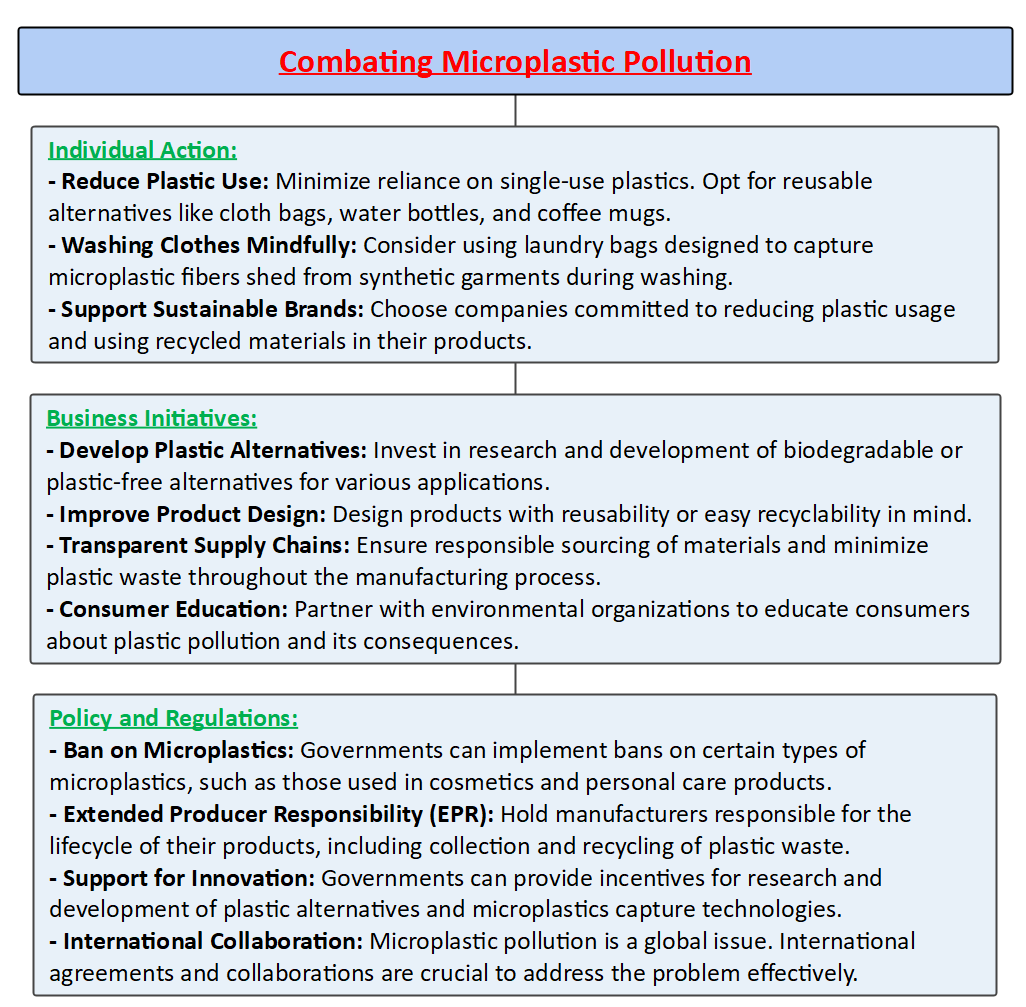Description

Copyright infringement not intended
Picture Courtesy: https://cen.acs.org/environment/persistent-pollutants/Podcast-California-confronts-monitoring-challenges-microplastics-in-drinking-water/101/web/2023/02
Context: A recent study by the University of New Mexico Health Sciences found microplastics in Human placentas, raising concerns about possible risks to mother and foetal health.
Key Highlights of the Study
Microplastics found in the Human Placenta
- The study examined 62 placental samples and discovered microplastics in all of them.
- The levels of nano- and microplastics (NMP) varied, with an average of 126.8 micrograms per gram of placental tissue.
- Polyethylene was the most common polymer, accounting for 54% of all NMPs. Other types of polymers include polyvinyl chloride (PVC), nylon, and others.
|
Previous Studies on Microplastics in the Human Placenta
●A study carried out in China in January 2023 discovered microplastics in all 17 placenta samples analysed, with an average of about 2.7 particles per gram.
●A 2021 study from Italy reported the first identification of microplastics in human placentas, including numerous polymers and colours.
|
How do microplastics enter the foetus?
- Studies raised concerns regarding the possibility of microplastics entering the foetus through the mother's placenta.
- A 2021 German study discovered microplastics not just in the placenta but also in meconium samples (the first faecal waste of babies).
Growing Concerns for Microplastic Occurrence
- The growing presence of microplastics in the human body, particularly in the placenta, raises concerns for vulnerable groups such as babies with weak immune systems.
- The long-term health consequences of ingesting and inhaling these microscopic plastic particles are not fully understood, and believing no danger seems unreasonable.
Health Effects and Long-Term Consequences
- Microplastic exposure has been associated with particle toxicity, oxidative stress, inflammation, and potential long-term health consequences, including an increased risk of neoplasia (abnormal cell growth, such as cancer).
- Microplastics have the ability to release components, accumulated pollutants, and pathogenic organisms, generating additional concerns about their health effects.
More research is required
- The study highlights the importance of performing wide assessments of potential contamination sources during sampling and analysis to improve the accuracy of microplastic identification in organ tissues.
- The understanding of microplastic toxicity is limited and depends on a number of parameters, including exposure concentration, particle properties, adsorbed pollutants, tissues affected, and individual sensitivity.

About Microplastics
- Microplastics are small pieces of plastic that are smaller than 5 millimetres, which are becoming an environmental hazard.
- Their existence has been confirmed in nearly every part of the world, from the deepest ocean trenches to the snow-capped tops of mountains.
- Due to their small size, microplastics are easily consumed by animals at all levels of the food chain, from zooplankton to big fish. They are usually made up of carbon and hydrogen atoms bonded together in long chains (polymers), but they may also include other harmful components.
Substances and Variation
- Some microplastics contain potentially harmful chemicals such as phthalates and bisphenols, which can affect hormones in organisms. These additives may leach from the plastic particles into the surrounding environment or be absorbed by organisms that consume them.
- Microplastics exist in a variety of forms and concentrations, which influence their environmental behaviour and possible effects. For example, sharp or irregular-shaped microplastics may cause more internal injury to wildlife if consumed. Additionally, some microplastics may have uplifting qualities, allowing them to keep floating in the water layer for extended periods, increasing the risk of ingestion by marine organisms.
Microplastics are found in two major forms:
- Primary Microplastics: Directly manufactured within this size range. These plastic particles are not byproducts of anything else, and they are purposely designed to be small. Examples include:
- Microbeads, which were previously used in scrubbing scrubs and cosmetic detergents, have been prohibited in some countries due to environmental concerns.
- Synthetic clothes fibres are discharged upon washing. These microscopic fibres are found in garments composed of polyester, nylon, and other synthetic textiles.
- Industrial plastic particles are used in plastic production. They get damaged or lost accidentally during transportation or manufacturing and can end up in waterways or the environment.
- Secondary Microplastic: With time, large plastic objects such as bottles, bags, and fishing gear break down. Sunlight, wave action, and weathering gradually break down these plastic materials into smaller and smaller fragments, resulting in microplastics.
Impacts of Microplastics
- Animals may consume microplastics, which can cause:
- Blockages in the digestive systems
- Reduced feeding and malnutrition.
- Possible death
- Disruption of reproductive health
- Bioaccumulation occurs when microplastics are mistaken for food by smaller creatures. This could potentially reach people who eat seafood. The long-term impacts on human health are still under investigation.
- Researchers are now investigating the potential health effects of microplastics on people. Areas of concern include:
- Endocrine disruption (hormonal imbalance)
- Inflammation
- Potential for carcinogenic consequences: A 2022 study published in Nature Nanotechnology reveals that microplastics may be able to penetrate the human gut barrier, raising concerns about potential internal health risks.

Conclusion
- The problem of microplastics requires timely attention and coordinated efforts at all levels, from individual activities to global initiatives. Understanding every aspect of their impact, enforcing effective legislation, and encouraging sustainable habits are all critical components of a comprehensive approach to reducing the environmental and human health challenges connected with microplastics.

Must Read Articles:
MICROPLASTICS: https://www.iasgyan.in/daily-current-affairs/microplastics-2#:~:text=Microplastics%20are%20plastic%20debris%20smaller,which%20are%20difficult%20to%20detect.
|
PRACTICE QUESTION
Q. Given the range of sources of microplastic pollution, what are the most efficient and scalable approaches to reduce microplastic contamination in aquatic and terrestrial environments while accounting for socioeconomic variables and regional differences in waste management infrastructure?
|












